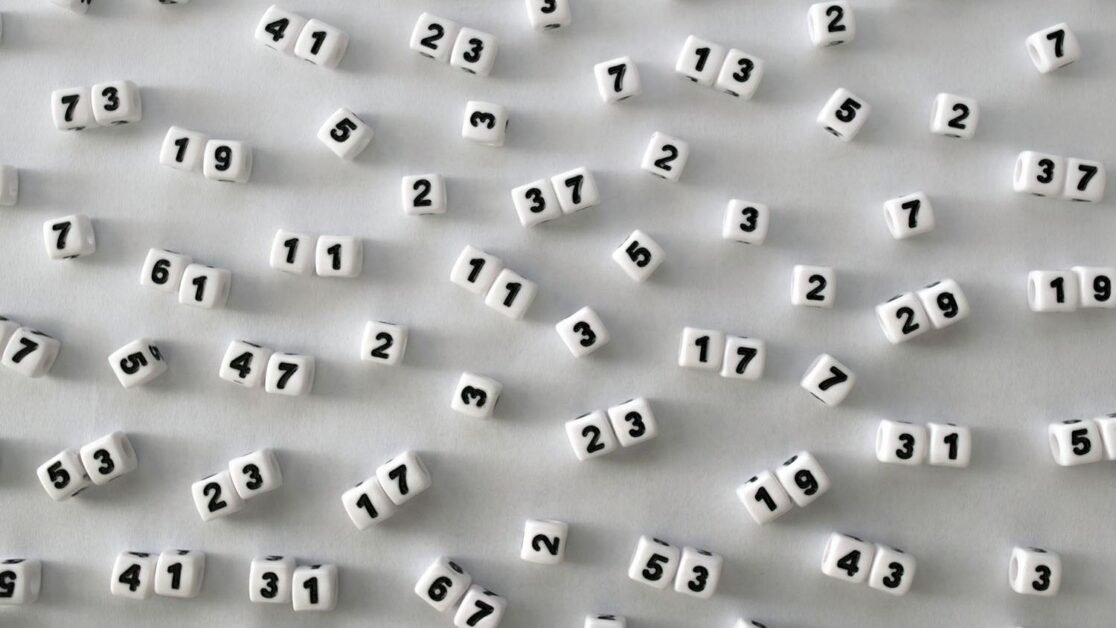
- Co-prime numbers are numbers that have no common factor other than 1. A set of co-prime numbers must consist of at least two numbers.
- Co-prime numbers are those that contain only one common element, such as 4 and 7, 5, 7, and 9. Co-prime numbers do not always have to be prime numbers. Co-primes are formed by two composite integers, such as 4 and 9.
- Co-Prime Numbers are a group of integers or numbers that share only the number 1 as a common factor.
- Co-Prime Numbers are also known as relative prime or mutually prime numbers. At least two numbers are required to form a Co Prime number.
- Furthermore, every prime number is co-prime to every other prime number. It is also worth noting that the sum of any two coprime numbers is coprime with the product of their products.
- We have supplied all of the necessary information in this post, such as co prime number meaning, list, properties, solved instances, and so on. Continue reading to understand more about co prime numbers.
What are Co-prime Numbers?
Co-Prime Numbers: If the sole element that two numbers a and b have in common is 1, then a and b are co-prime numbers. (a, b) is said to be a co-prime pair in this scenario. Co-prime numbers are sometimes known as comparatively prime numbers or mutually prime numbers.
List of Co-prime Numbers
Given below is the list of a few coprime for your reference.
| Pairs of Co-prime Numbers |
| (2,3) |
| (3,5) |
| (4,9) |
| (5,7) |
| (11,13) |
| (17,19) |
How to Find Co-prime Numbers?
- To determine whether two numbers are co-prime, we must first determine their Greatest Common Factor (GCF). We can say they are co-prime if their GCF is 1.
- Exemplification 1: Consider the integers 5 and 9. 1 and 5 are the factors of 5. The nine factors are 1, 3, and 9. The factor that both 5 and 9 have in common is 1. GCF of (5, 9) = 1. As a result, (5, 9) is a co-prime pair.
Properties of Co-prime Numbers
Co-prime numbers can be easily determined by using the properties described below:
- The number 1 is co-prime with every other number.
- When two prime numbers are added together, they always yield co-prime numbers.
- There are always two elements in prime numbers: 1 and the number itself. As a result, the common factor between two prime numbers is always 1.
- 2, 3 (the factors of 2 are 1, 2 and the factors of 3 are 1, 3). As a result, 2,3 are Prime Factors.)
- Any two consecutive integers or numbers are always Co-Prime numbers since the HCF of the succeeding numbers is always 1. For example: 1,2,3,4,5,6,7,8,9,10,11,12,13,14,15,16,17,18,19,20,21,22,23,24,25,26,27,28,29,30,31,32,33
- Because even numbers always have 2 as their common factor, two even numbers cannot form a co prime number.
- Two numbers or integers with unit numbers of 0 and 5 cannot be co prime numbers.
- 30 and 35, for example, cannot be coprime numbers because they are both divisible by 5.
- The HCF (Highest Common Factor) of two coprime numbers is always 1. Because 5 and 9 are coprime numbers, HCF (5, 9) = 1.
- The product of two coprimes is always their Least Common Multiple (LCM). 5 and 9 are co-prime numbers, for example. As a result, LCM (5, 9) = 45.
- With each number, 1 creates a co-prime number pair. Two even integers cannot be co-prime numbers since their common factor is always 2.
- The product of two co-prime numbers is always co-prime as well. 5 and 9 are co-prime numbers, for example. In this case, 5 + 9 = 14 is co-prime with 5 9 = 45.
- A pair of prime numbers is always co-prime. They only have one thing in common. Consider the numbers 29 and 31. 29 has only two prime factors, 1 and 29. 31 has only two prime components, 1 and 31.
- Prime numbers are 29 and 31. They only have one thing in common: 1. As a result, they are co-prime. Any two prime numbers can be checked to see if they are co-prime. 2 and 3, for example, 5 and 7, 11 and 13, and so on.
- Co-prime numbers are all pairs of two consecutive numbers. The common factor of any two consecutive numbers is .
Co-prime and Twin Prime Numbers
- Twin prime numbers are always prime numbers, but co-prime numbers might be either prime or composite.
- The difference between any two twin prime numbers is always 2, while the difference between two co-prime numbers can be anywhere on the number line.
- Not all co-prime numbers are twin prime numbers, but all twin prime numbers are co-prime.
- Co-prime numbers are ones with an HCF of 1. Twin prime numbers, on the other hand, are prime numbers whose difference is always 2. Three and five, for example, are twin prime numbers.
- The following points distinguish co-prime and twin prime numbers.
- Twin prime numbers are always prime numbers, whereas co-prime numbers can also be composite.
- The difference between two twin primes is always a multiple of two, whereas the difference between two co-primes can be any number.
- All twin prime number pairings are also co-prime numbers, but all co-prime numbers may or may not be twin primes.
- 1 has a co-prime pair with every number, but only 3 has a twin prime pair.
| Co-Prime Numbers | Twin Prime Numbers |
| The difference between two co-prime numbers can be any number such as 1, 2, 6, 10 and so on. | The difference between two twin prime numbers is always 2 (two). |
| They can be composite numbers. | They are always prime numbers. |
| Pairs of co-prime numbers are not always twin prime numbers. | The pairs of twin prime numbers are always co-prime numbers. |
Co-prime Numbers from 1 to 100
- Many pairings can be listed as co-prime numbers in the list of co-prime numbers from 1 to 100 depending on the preceding properties.
- Co-prime number pairings ranging from 1 to 100 include (1, 2), (3, 67), (2, 7), (99, 100), (34, 79), (54, 67), (10, 11), and so on. Experiment with creating additional such pairings of co-prime integers on your own.
Important Notes:
- Two numbers are co-prime if their GCF is 1 and vice versa.
- Co-prime numbers don’t need to be prime numbers. For example, 12 and 35 are co-prime numbers, although, 12 and 35 are NOT prime numbers.
- Any two prime numbers are co-prime.
- Any two consecutive numbers are co-prime.
- 1 forms a co-prime pair with any other number.
- A prime number is co-prime with any other number that is not its multiple.
- Two even numbers are NEVER co-prime.
List Of Co-Prime Numbers
In this section, we have presented the most commonly used co-prime integers and their pairs in mathematics. Some of them have two prime numbers. The table below contains a list of co-prime number pairings.
Co-Prime Number Pairs (1 to 50)
| (1, 2) | (1, 11) | (1, 20) | (1, 30) | (1, 39) |
| (1, 3) | (1, 12) | (1, 21) | (1, 31) | (1, 40) |
| (1, 4) | (1, 13) | (1, 22) | (1, 32) | (1, 41) |
| (1, 5) | (1, 14) | (1, 23) | (1, 33) | (1, 42) |
| (1, 6) | (1, 15) | (1, 24) | (1, 34) | (1, 43) |
| (1, 7) | (1, 16) | (1, 25) | (1, 35) | (1, 44) |
| (1, 8) | (1, 17) | (1, 26) | (1, 36) | (1, 45) |
| (1, 9) | (1, 18) | (1, 28) | (1, 37) | (1, 46) |
| (1, 10) | (1, 19) | (1, 29) | (1, 38) | (1, 47) |
| (2, 3) | (2, 25) | (2, 47) | (5, 21) | (1, 48) |
| (2, 5) | (2, 27) | (2, 49) | (5, 23) | (1, 49) |
| (2, 7) | (2, 29) | (3, 5) | (5, 27) | (1, 50) |
| (2, 9) | (2, 31) | (3, 7) | (5, 29) | (5, 49) |
| (2, 11) | (2, 33) | (3, 11) | (5, 31) | (7, 11) |
| (2, 13) | (2, 35) | (5, 7) | (5, 33) | (7, 13) |
| (2, 15) | (2, 37) | (5, 9) | (5, 37) | (7, 15) |
| (2, 17) | (2, 39) | (5, 11) | (5, 39) | (7, 17) |
| (2, 19) | (2, 41) | (5, 12) | (5, 41) | (7, 19) |
| (2, 21) | (2, 43) | (5, 13) | (5, 43) | (7, 23) |
| (2, 23) | (2, 45) | (5, 17) | (5, 47) | (7, 25) |
| (7, 27) | (7, 31) | (5, 19) | (7, 9) | (7, 33) |
Solved Example Questions
- Students struggling with math homework or any other concept must hire an experienced and qualified online or private math tutor.
- Numbers can sometimes be intimidating; that’s why we advise our students to go for extra help. Here are a few solved examples to help you understand the concept of finding co-prime numbers.
Question 1: Check whether 18 and 35 are co-prime numbers or not?
Solution:
- First, check the common factors of both:
- Factors of 18: 1, 2, 3, 6, 9, 18
- Factors of 35: 1, 5, 7, 35
- Here, the most common factor of 18 and 35 is 1.
Hence, 18 and 35 are co-prime numbers.
Frequently Asked Questions:
Q1 How do you find the co-prime of a number?
Answer: Determine a number that cannot be divided by the factors of the other number to find its co-prime. Furthermore, their HCF (Highest Common Factor) is always 1.
Q2 How would you distinguish between prime and co-prime numbers?
Answer: prime number is a number that has no other factors other than one, and the number itself is known as a prime number. For instance, 1, 3, 5, 7, and so on.
Numbers that are co-prime: Co-prime numbers are a pair of numbers or two numbers that have no common factor other than 1. For instance, (1, 2), (3, 4), (5, 11), and so forth.
Q3 What is the co-prime number of all numbers?
Answer: According to the co-prime number qualities, 1 is the only co-prime of all other numbers or integers. As a result, 1 is the co-prime number.
Q4 What is the greatest common factor between two coprime numbers?
Answer: Because 1 is the only number with a common co-prime. As a result, the Highest Common Factor of two co-prime numbers is always 1.
Q5 Could you please write any two consecutive and co-prime numbers?
Answer: Co-prime numbers are any two consecutive numbers in mathematics. For instance, 215 and 216. They are both co-prime and consecutive numbers.
Q6 What Is the Distinction Between Prime and Co-Prime Numbers?
Answer: A prime number is one that has no factors other than 1 and itself.





